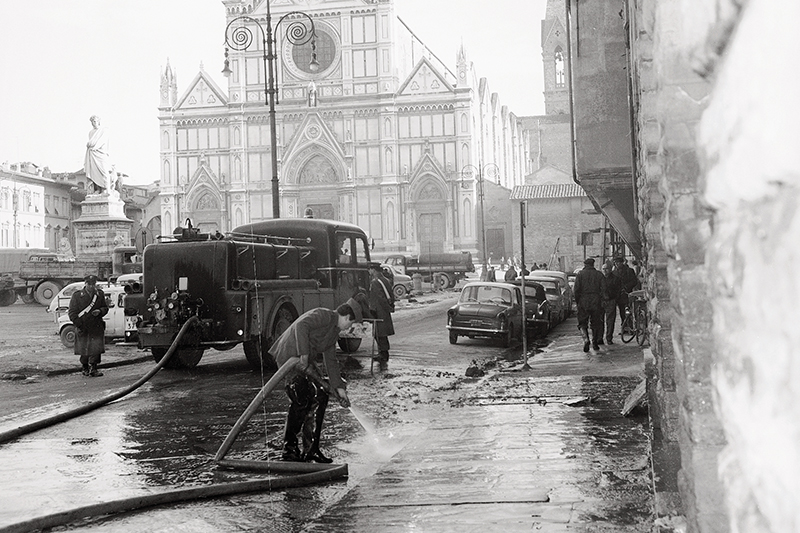The flood of Florence

After ten days of heavy rain, the Arno River flooded in the Casentino and Valdarno Superiore areas on the night between 3 and 4 November 1966. When the flood reached the Tuscan capital, the damage was irreparable: a three-meter-high wave swept through the city streets at 60 kilometers per hour. From the banks of the Arno, transformed into a single river, the mud flooded everywhere, sweeping away houses, churches, and historical buildings.
In the Santa Croce district, via dei Neri, a plate remembers the highest point reached by the flood: 4 meters and 92 centimeters. Due to the absence of a monitoring network, the overflow of the Arno was not announced in advance, and the citizens were caught unprepared. The citizens of Florence, caught at home or in the streets flooded by the waters, had to fight for their lives. A total of 35 people died in the region.
On November 6, 1966, when the Arno retreated, it left the city under 600,000 tons of mud. Carabinieri, police, military forces, firefighters—all gathered in Florence to help. The Fire Department, on the night between 4 and 5 November, saved thousands of people, with over nine thousand interventions. After the phase of first aid, the activities concentrated on the distribution of medicines, food, and feed for livestock.
A key element of this emergency was the spontaneous response of the population, the "active citizenship" from all over Italy, and many foreign countries to help a city in dire straits: the "mud angels." The Armed Forces, while numerous, operated without the coordination that would come only with future Civil Protection: it was only six days after the flood that the government managed to set up an organized rescue network.
For the first time in Italy, the lack of a national system able to effectively intervene during emergencies and the need to monitor the territory through constant forecasting and prevention activities was perceived. A regulatory response arrived in 1970 with Law 996 - "Norms on relief and assistance to populations struck by calamities" - which outlined an overall framework of civil protection interventions and recognized the activity of volunteers for the first time.
Photo: The historical center of Florence after the flood of November 4, 1966 / The National Fire and Rescue Service